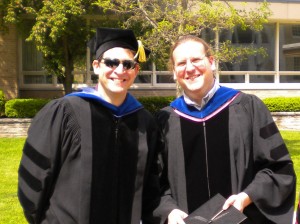Although most of LU is closed today due to the blizzardy conditions, the Lawrence Economics Blog trudges ahead. And, what better way to celebrate the snowfall than to look ahead to the holiday gift-giving season? As last year’s economists’ buying guide went over so well, I’ve decided to repost it here. So here we go…

It’s that time of year where we bid you Happy Holidays from the Economics profession.
Up first, we have a truly heroic figure, Joel Waldfogel, author of Scroogeonomics.* I don’t know your preferences as well as you do, so whatever I give you is probably sub-optimal, unless you tell me exactly what you want. And even then, wouldn’t you rather just have the cash anyway? For those of you intermediate micro students, you know that kids prefer cash over any in-kind equivalent.
Kudos to Professor Waldfogel for willing to be “that guy.”
Speaking of Scrooge, was he really such a bad guy? Not so, says Steven Landsburg. Let’s give it up for our annual Scrooge endorsement from this classic Slate piece:
In this whole world, there is nobody more generous than the miser–the man who could deplete the world’s resources but chooses not to. The only difference between miserliness and philanthropy is that the philanthropist serves a favored few while the miser spreads his largess far and wide.
If you build a house and refuse to buy a house, the rest of the world is one house richer. If you earn a dollar and refuse to spend a dollar, the rest of the world is one dollar richer–because you produced a dollar’s worth of goods and didn’t consume them.
Ah, I just feel all warm and fuzzy inside.
Moving on to The Atlantic, where we have “The Behavioral Economist’s Guide to Buying Presents.” Now this is some truly indispensable advice. Like Waldfogel above, the money point is to just give money. But, for the true romantics who feel compelled to give a gift, the behavioralists recommend this:
Buying for a guy? Get him a gadget. Buying for a girl? Get her something expensive and useless.
The gadget I get.** The expensive and useless? That’s from Geoffrey Miller’s, The Mating Mind. Here’s a brief explanation of courtship:
The wastefulness of courtship is what makes it romantic. The wasteful dancing, the wasteful gift-giving, the wasteful conversation, the wasteful laughter, the wasteful foreplay, the wasteful adventures. From the viewpoint of “survival of the fittest” the waste looks mad and pointless and maladaptive… However, from the viewpoint of fitness indicator theory, this waste is the most efficient and reliable way to discover someone’s fitness. Where you see conspicuous waste in nature, sexual choice has often been at work.
This presents something of a conundrum because “expensive and useless” seems to be at odds with Waldfogel’s hyper-utilitarian cold, hard cash suggestion.
Last year I suggested that we could solve the puzzle by giving her Euro!, but it seems that the EU keeps plodding along. Perhaps a holiday shrub?
…
* The book is a follow up to the classic, “The Deadweight Loss of Christmas.” Clearly, the book title Scroogonomics can be chalked up to the value-added of the publishing house.
**Conceptually, that is. I generally get ties and socks.
 Indeed, Mr. Valukas was appointed by federal court to determine the
Indeed, Mr. Valukas was appointed by federal court to determine the 